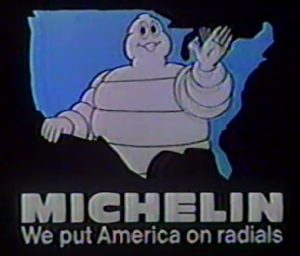
It is often easy, when considering the automotive industry, for environmental activists and sustainably minded individuals to see electrification as the end-all-be-all for cars. While EVs certainly present viable and substantial benefits over traditional internal combustion engine vehicles, the true mark of success for sustainable personal transport will be more complex than eliminating one power source for another. Cars have become complex, technological appliances that mobilize our daily lives. That much is evident from manufacturers’ pursuit of constant updates to safety features, luxury equipment, and autonomous driving capabilities. In all of these advancements however, certain inputs to the production of automobiles remain constant. The resources spent in their construction, fluids that ensure proper operation, wiring that manages the ever-increasing number of computers, and of course fuel, whether from a power station or a gas pump, are unchanged in a modern car’s production, operation, and maintenance. Each aforementioned input presents rich opportunities for a targeted sustainability effort. One sector often overlooked is tires. Tire manufacturers Goodyear and Michelin are making marked progress in testing and bringing largely renewable and environmentally friendly tires to market. Before examining these new, sustainable alternatives to your vehicle’s traditional rubber, what harm do current tire practices pose to the environment?
One major problem with conventional tire construction is the waste they produce over the course of their roadgoing lifecycle. ECO Green Equipment is a company dedicated to developing effective and sustainable machinery in the world of tire processing. Their article Environmental Impacts of Waste Tire Disposal details the current problems with the way we handle expired tires. Natural rubber has been deemed scarce and increasingly difficult to produce as rubber trees require meticulous care before their resources can be harvested. Alternatively, synthetic rubber has been used in the contemporary production of tires. However, the synthetic material comes at roughly the cost of one barrel of oil for each tire produced. Once expired, these tires are ideally recycled or retreaded. This is rarely the path taken by used tires. More often than not, these non-decomposable tires are added to tire heaps in junkyards or landfills. This leads to the release of toxic chemicals into local ecosystems and the environment. If improperly disposed of, tires have the potential to completely eliminate essential soil bacteria, killing plants and animal species in addition to increasing carbon footprint and spurring climate change. Political debate surrounding the management of whole-tire disposal has arisen due to the mass of tires that have simply been left to rot and harbor malignant environmental hazards. Perhaps more devious is the continuous waste that tires produce from their regular operation. Tire particles (pieces of synthetic material that separate from the tire while in operation) present a real danger when considering their introduction of microplastics into the environment. World Economic Forum cites a 2017 Oregon State University study that accounted for nearly 1.5 million metric tons of tire particles entering the U.S. environment every year in their article Tire particle pollution may be harming freshwater and estuary ecosystems. The same study attributed anywhere from 5-10% of ocean plastic pollution to tire particles. These micro and nano plastics pose an immense danger to the wellbeing of marine life. OSU found that many organisms possessed stunted growth, developmental problems, unnatural behavior, and even outright likelihood of death. Solutions in this field include roadside rain gardens, technology for cars dedicated to catching particles, developing tires with a longer road life, and increased use and funding of public transit and infrastructure.
One solution identified by tire manufacturers is the ability to build tires using more sustainable materials with the hope of controlling some of the aforementioned chemical and material runoff. I was first made aware of this effort by Andrew Beckford’s MotorTrend article Goodyear’s New Tire is Made From Soybean Oil, Rice Husks, and Pine Resin. Composed of 17 novel ingredients, the tire mentioned in the article is reportedly constructed from 90% sustainably sourced materials. What is even more impressive however is that this very tire compound has been approved by internal and regulatory scrutiny for road use. Mass production is proving to need refinement, but a 70% sustainably sourced tire is already available for inquiry on Goodyear’s website with a 100% sustainably sourced tire in development for 2030. Michelin has also taken on the challenge of sustainable material tires with 46% and 53% sustainably sourced race tires already occupying the wheel wells of the new 718 Porsche Cayman GT4 ePerformance electric race car.

As a whole, the sustainable tire movement is one that can be backed by environmental and automotive enthusiasts alike. In testing, there has been very little detriments to the new methods of construction, with specific, environmentally friendly materials chosen for their performance benefits. Undoubtedly it will take some convincing for legacy auto manufacturers, race teams, and individuals to jump ship from radials to rice husks but, thanks to Goodyear and Michelin the future is looking bright for a more sustainable tire industry.
Sources
- https://www.motortrend.com/events/goodyear-tire-sustainable-ces-2023/?sm_id=paid%3Asm_id%3Afb%3Amtoo%3A23%3AOOtraffic%3Aarticle%3Am18-65us%3Amt&fbclid=PAAaaJeWT-pQk4j4o2al11FJUOx9mDcDxf4V09lm55BEjMnQShpEloFwdanWU_aem_AYJ5PLO2zbtBJQMq7oTpJUb8vRzRbXdk0LT-4nWvEeoF8uXlo7R3Kat8YEDxAMf2lVuSclWCRdlHRP8cNFbeTdoj0Vo6B803RDhQMHRJhYm9YkSxH8JjhDZxd_jXyp_Jd84
- https://whattyre.com/news/goodwood-debut-for-michelin-53-sustainable-tyres/
- https://www.goodyear.com/en-US/sustainablematerialtire
- https://www.weforum.org/agenda/2022/03/tire-particle-pollution-may-be-harming-freshwater-and-estuary-ecosystems/#:~:text=A%202017%20study%20estimated%20that,both%20microplastic%20and%20nanoplastic%20pollution.
- https://ecogreenequipment.com/environmental-impacts-of-waste-tire-disposal/